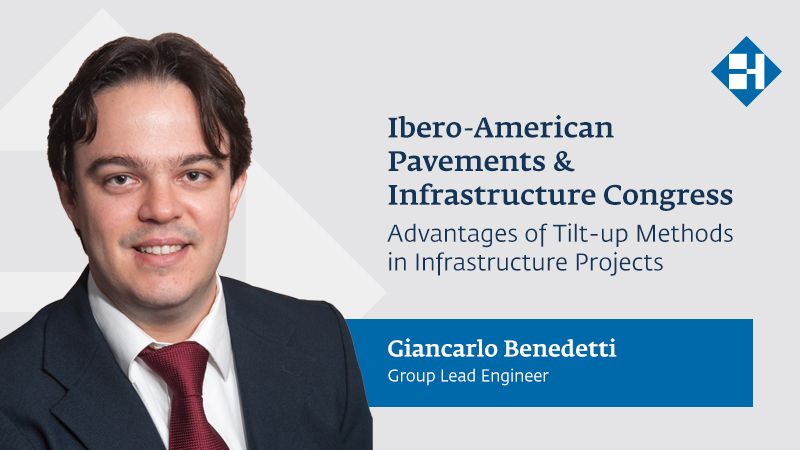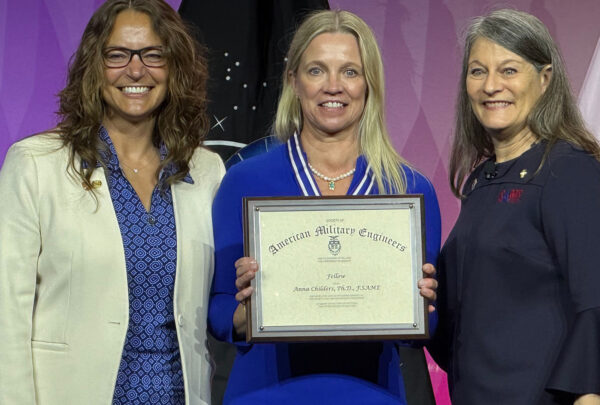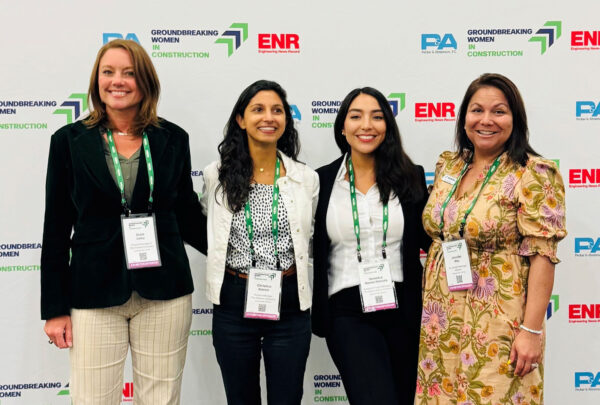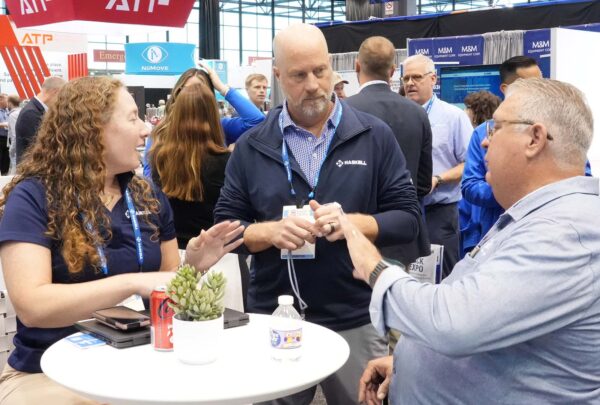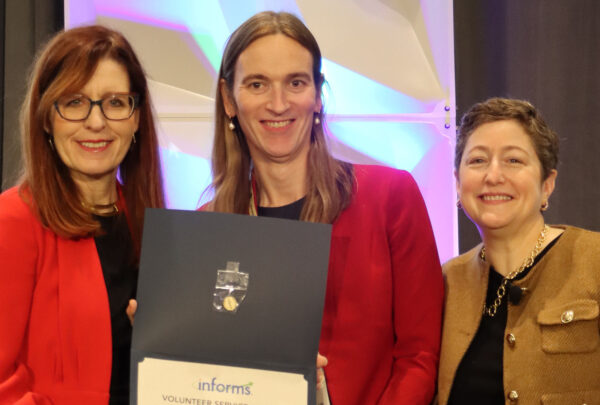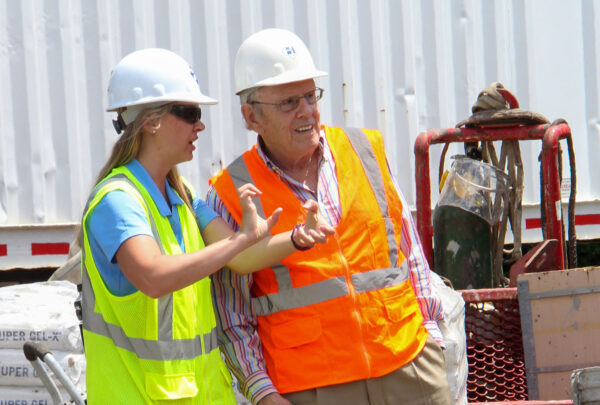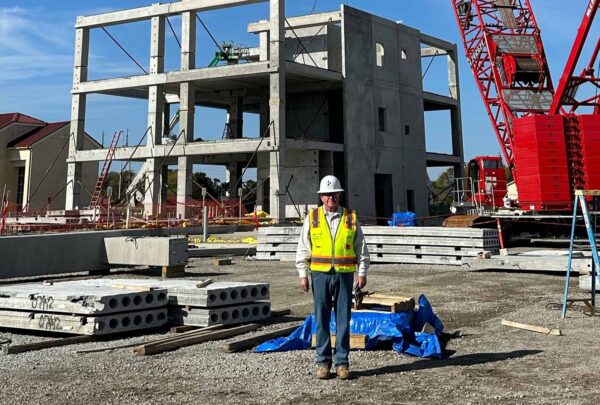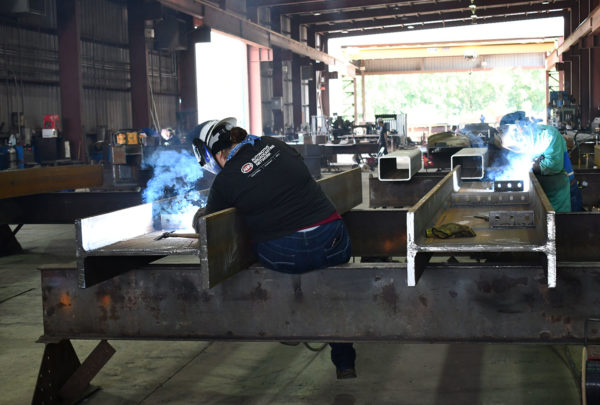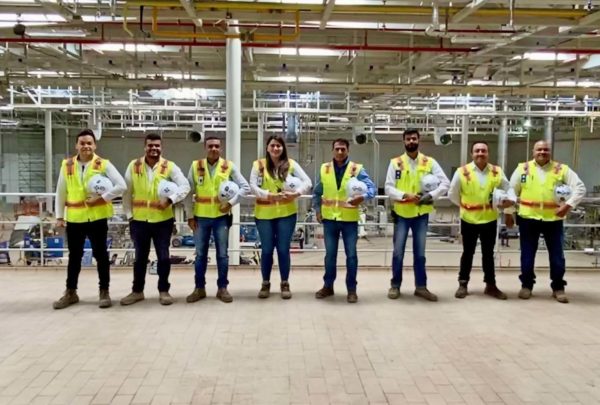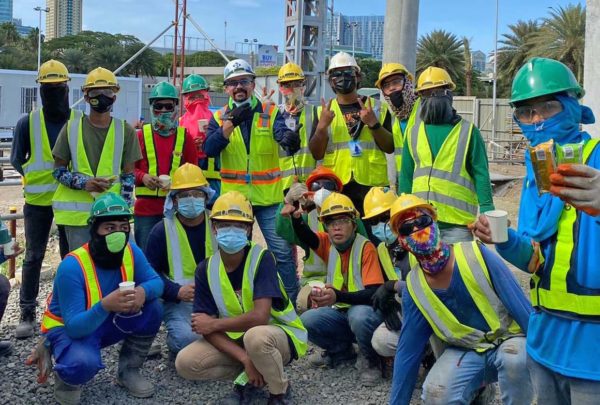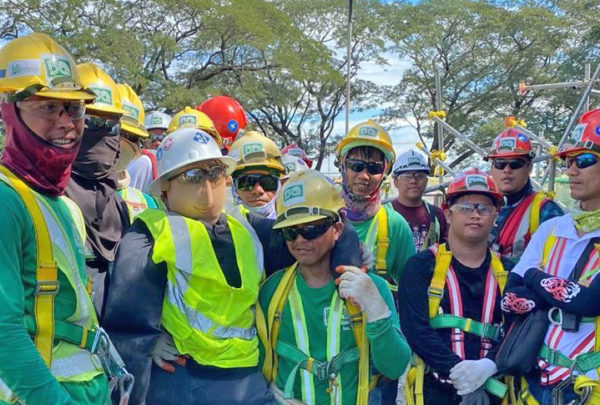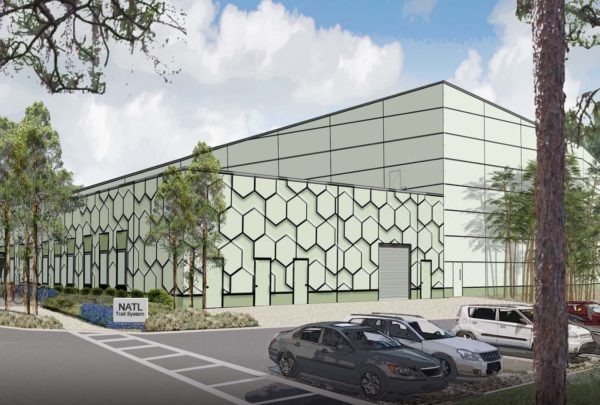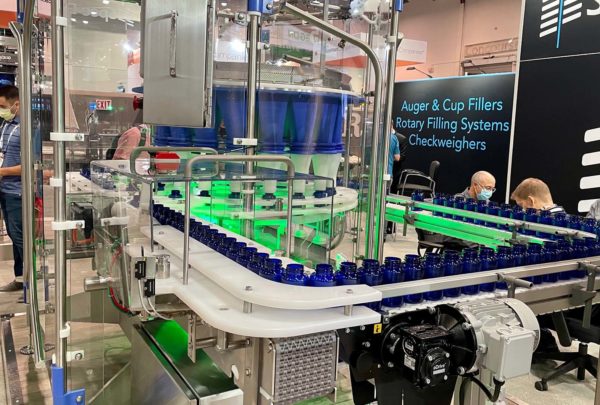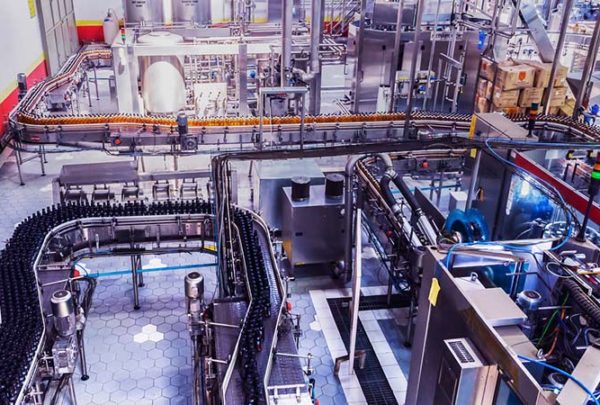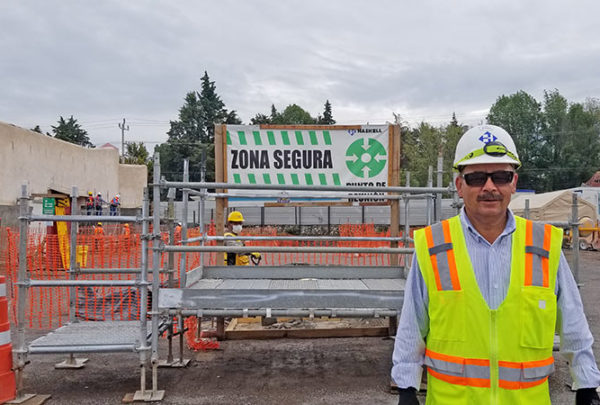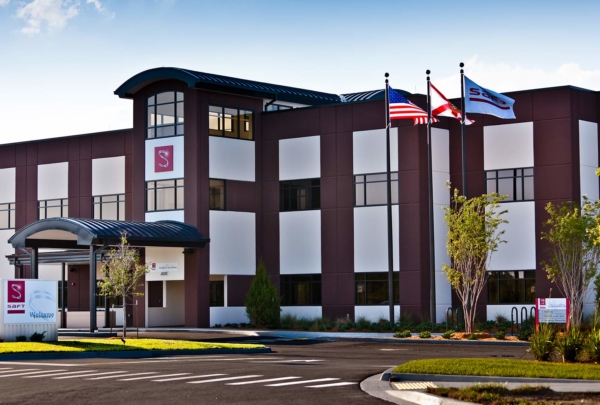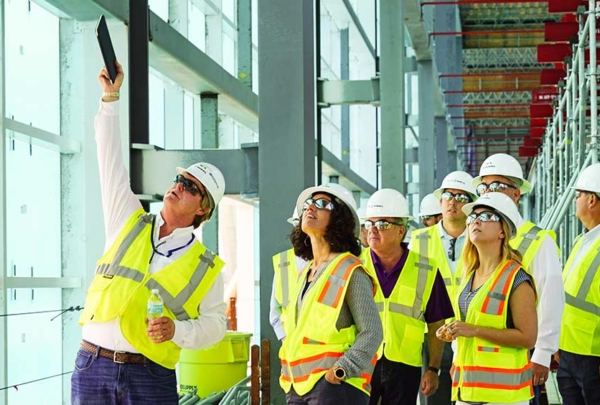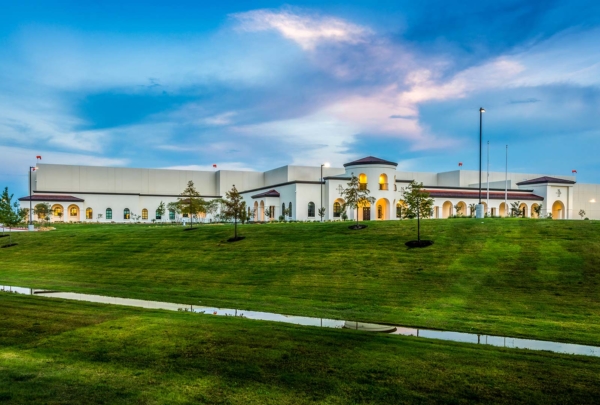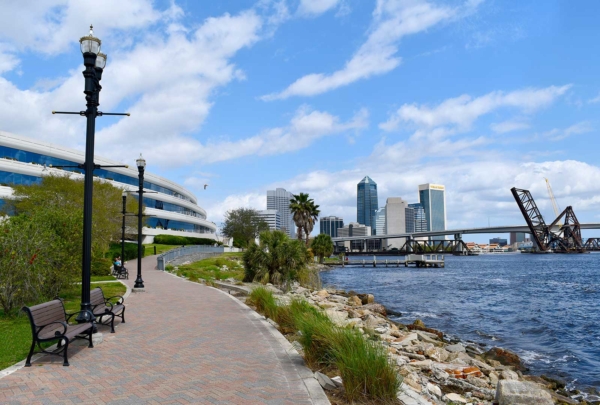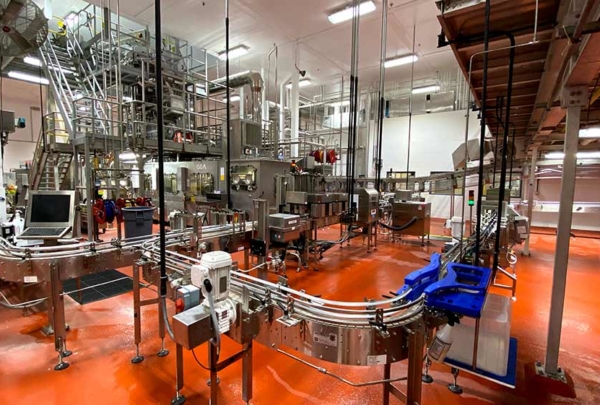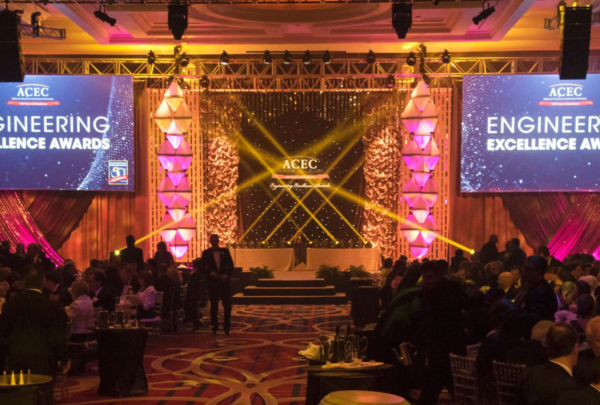When presented with the opportunity to share best practices with construction industry professionals in Latin America, Giancarlo Benedetti, PE, SE, jumped at the chance to talk about a process that’s underutilized in the region but that could save time and costs in civil construction projects.
“The Ibero-American Pavements and Infrastructure Congress focused mainly on civil infrastructure like bridges, roads, and tunnels. What I talked about was more related to building-type infrastructure that can be done using tilt-up wall systems,” said Benedetti, Group Lead Structural Engineer with Haskell’s Consumer Packaged Goods (CPG) Group in South Florida. “They can use it on government buildings, in hospitals, any public buildings. We talked about the pros and cons of tilt-up, why it’s used, how it works, and taking them through the whole process from conceptual design through construction administration.”
The tilt-up wall system is a construction method in which concrete is poured on a casting bed at the job site. After the concrete cures lying flat on the ground, a crane lifts it into place. Unlike the cast-in-place process, in which concrete is poured into vertical forms and needs to cure for several days before more height can be added, tilt-up walls save on labor costs and time as forms and rebar are easier to place as well as concrete which can be done in one single pour for an entire wall panel. Tilt-up walls also allow the designer to incorporate unique elements into the exterior, such as recesses, rough finishes, and shapes that can be more difficult to achieve with other processes.
“It’s a pretty efficient system for single-story to multistory buildings, because while the casts are setting on the ground, the crew can work on other areas on the building,” Benedetti said. “Once the walls are ready to be lifted, boom, you have a whole shell built around you. It’s a good system structurally and for the architect as well. It combines speed with the flexibility of doing more with the walls.”
While tilt-up wall systems are common in the United States – Benedetti estimated between 80% and 90% of the buildings in Haskell’s CPG Group are built using this process – they are less common in Latin American countries. Benedetti said the main obstacle to using tilt-up walls is the lack of access to an ample site to maneuver the walls and lift them into place.
“Construction companies in Latin America would have to have access to a crane to lift the wall, as well as the braces that temporarily keep the wall in place to give it stability until the roof and floors are put into place,” Benedetti said. “This should be pretty easy to ship from the U.S. to Latin America, but that’s one reason this process is not as common there.”
Since pioneering the method early in its history, tilt-up construction has nearly become a Haskell Company trademark. The company’s design and construction teams have innovated with it and performed it with great efficiency, offering attractive savings to project owners.
With Haskell’s growing business in international markets, especially Latin America, the Ibero-American Pavements and Infrastructure Congress was an ideal opportunity to share insights and expertise in construction processes that can benefit Latin American projects and clients.
This year’s conference was the first that invited U.S. companies to attend and present. Haskell joined AECOM, Honeywell, Decon Structural Engineering, the U.S. Trade and Development Agency and the American Concrete Pavement Association at the event, reaffirming its role as a key partner in the construction, development, and infrastructure of Latin America.
“The congress let us show that we know how to do this well, and hopefully that gets our foot in the door to do more of this in Latin America overall,” Benedetti said. “I hope they say, ‘We want to engage them in this project and have them teach us how to do it.’”

